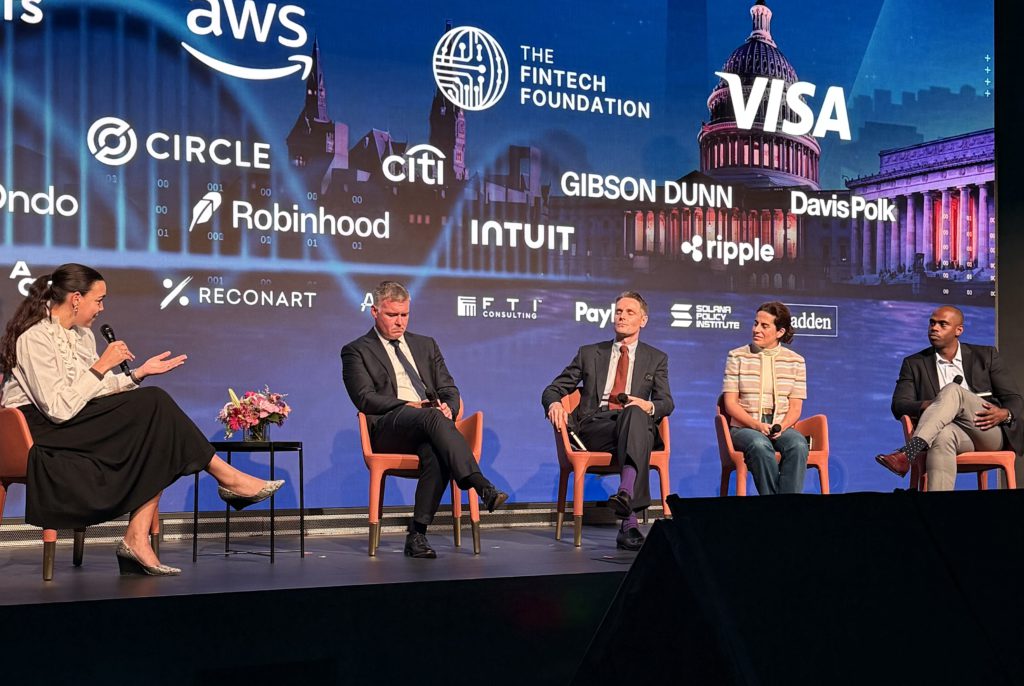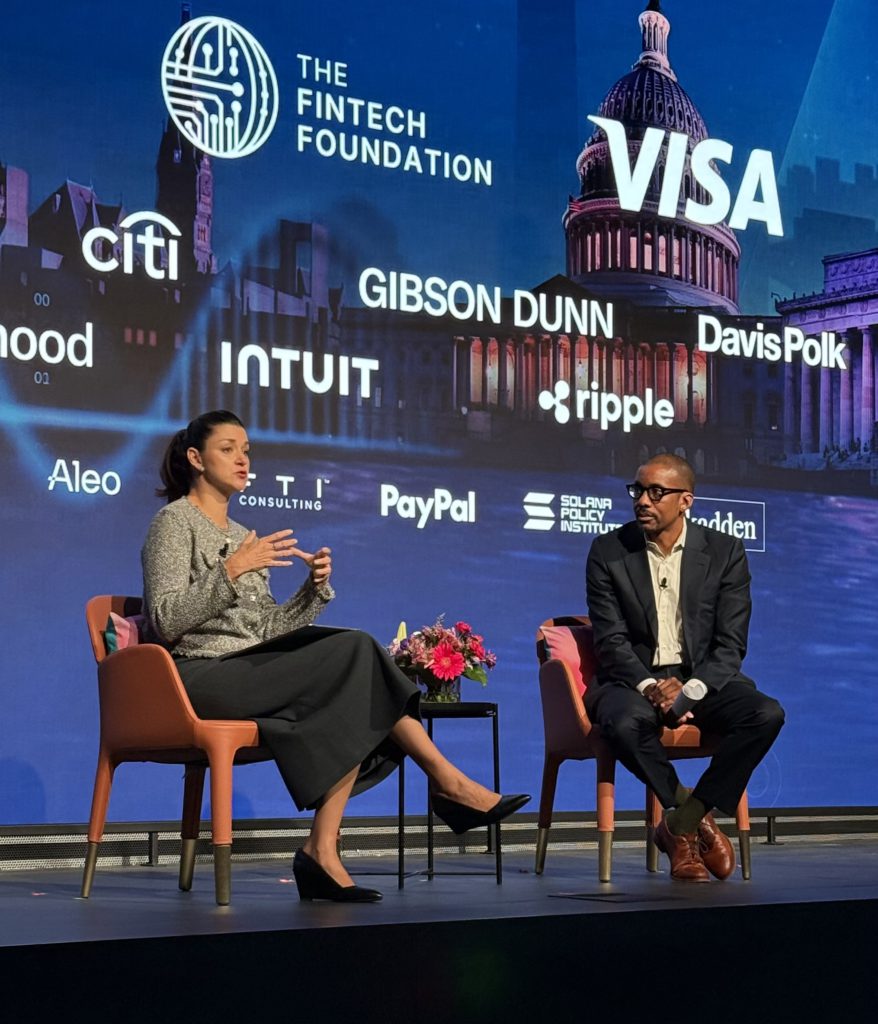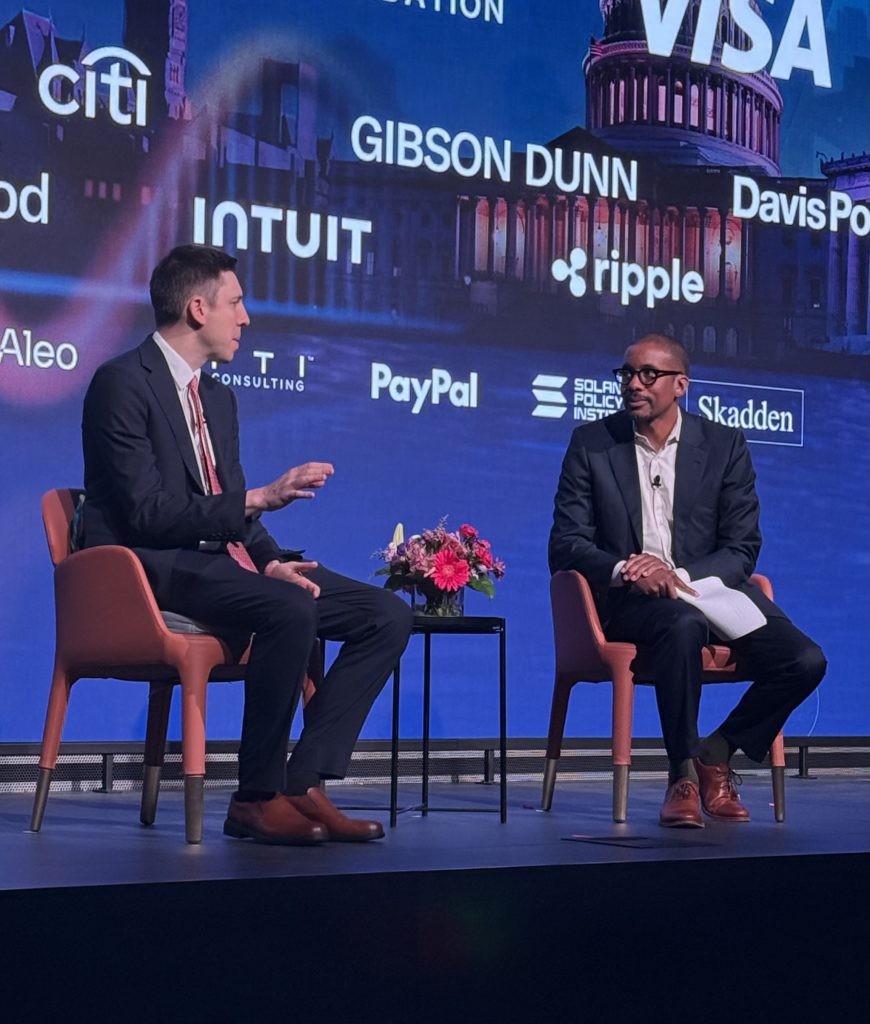
It’s 3p October 15, 2025 and our industry is waking up to the realization that AI Agents are replacing customers. Thrilled to see this conversation getting elevated. For every industry, agentic agents are a future that easy to predict, but the necessary infra, rules, and winning strategies are still far from figured out.
My live notes [and editorial] from the excellent agentic AI panel at DC Fintech week led by Elise Soucie Watts
Agentic AI is “the future of commerce” Todd Fox VS [not wrong!]
Agentic is “ground breaking, but early” Sarah Morgenstern VC [also fair]
Agentic is “Efficient delegated authority” Kendall Howell [once it all works!]
Sarah: Finance is increasingly ‘self driving’. AI reducing friction and cognitive load of managing finance. Usecases: Intelligently maximizing daily yield on deposits [note, as a bank, you may love some of these less], automatically refinancing debts. SMB enterprise-grade purchasing and cashflow management w/o cost and extreme hassle of enterprise ERP systems. Book keeping and reconciliation that’s automated. A CFO in my pocket. A lot of promise but still early with development.
Kendal: “Agentic systems mean Reasoning, planning, actions. But it will be trust in each of those that drives adoption” [consider selfdriving cars solved this with safety drivers, starting with human in the loop, but HITL not the end goal. In agentic banking/commerce how will agents build up the millions of miles of demonstrated self-driving experience? Who will be the safety drivers?]
Todd: “if we make it easy for a seller and buyer to trust each other, they are going to transact and that creates economic growth. Merchant side of the story: for 20yrs you’ve been fortifying your websites against bots. Bots have always been fraudsters. But now agentic commerce means that your next best customer might *also* be a bot. Identity is a key question, we need know your agent. Vendors are starting to build pieces of the stack, but requires public private collab on the standards.
Visa announced yesterday the trusted agent protocol. When making a payment it’s not just money moving A to B, it’s the framework of trust, of liability protection and rights. [PSA Visa is crushing it lately in setting very useful frameworks for agentic commerce, but we’re also going to need similar infra for agentic open banking and fiance – watch for more content from me on this soon!]
Todd – yes, be in convo with your regulator. But AI is a global transformation. Second best solutions are fragmented national/regional solutions. If the trust is done right every business can be a global business, every customer could be shopping globally for the best solutions.
Robert Bench asks: If we do this right we can get rid of the ad-based economy which is toxic. Could agentic commerce save us from a world of digital addiction led by the ad-based economy? [That would be great! but rather optimistic?]



